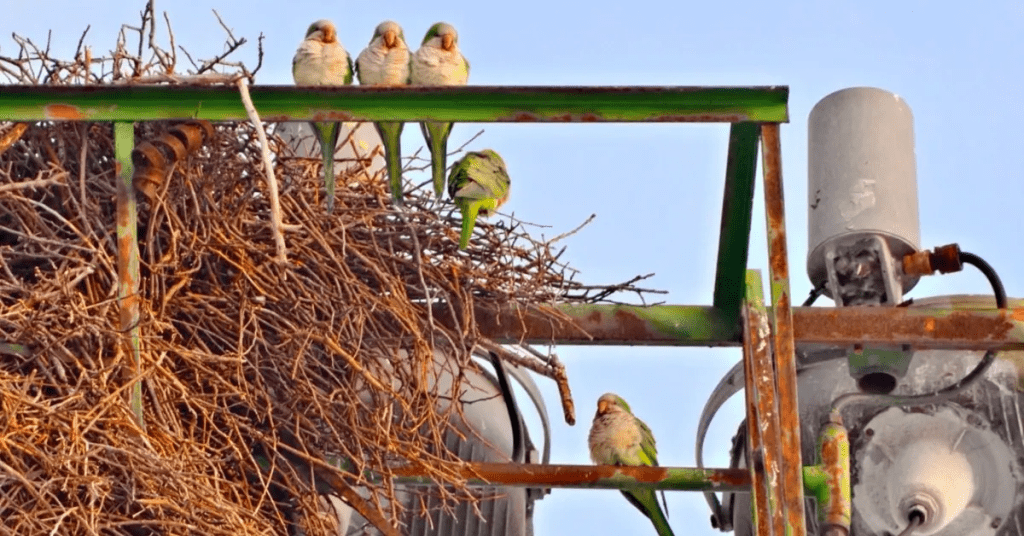Once confined to cages and aviaries as exotic pets, Monk Parakeets also known as Quaker Parrots have taken their freedom and flown with it. Originally native to the subtropical forests and grasslands of Uruguay and surrounding South American regions, these bright green birds are now found flitting across the skies of Brooklyn, Barcelona, Chicago, and dozens of other cities around the globe.
How did they get there? The story starts with pet trade escapes. Over the past several decades, countless Monk Parakeets either broke free or were released by overwhelmed owners. But instead of struggling in the wild, these resourceful birds adapted, survived, and even thrived in their new environments. Today, they are urban residents in every sense feathered squatters with a flair for construction and an impact that cities are still learning to manage.
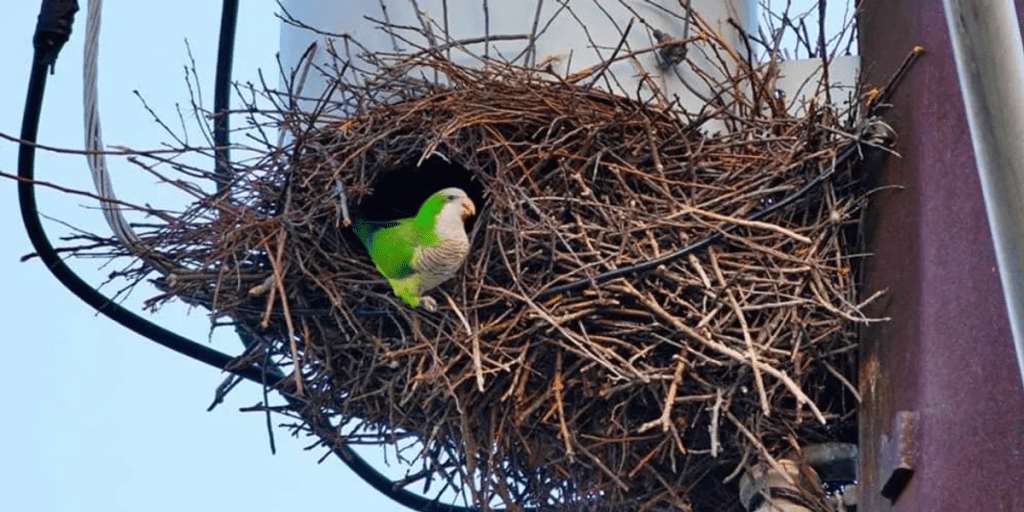
Not Your Typical Birdhouse Builders
Most birds build small nests hidden in trees or shrubs. Monk Parakeets do something entirely different. They construct massive, communal nests made out of twigs and branches, often in highly visible and elevated places like utility poles, stadium light towers, and cell towers.
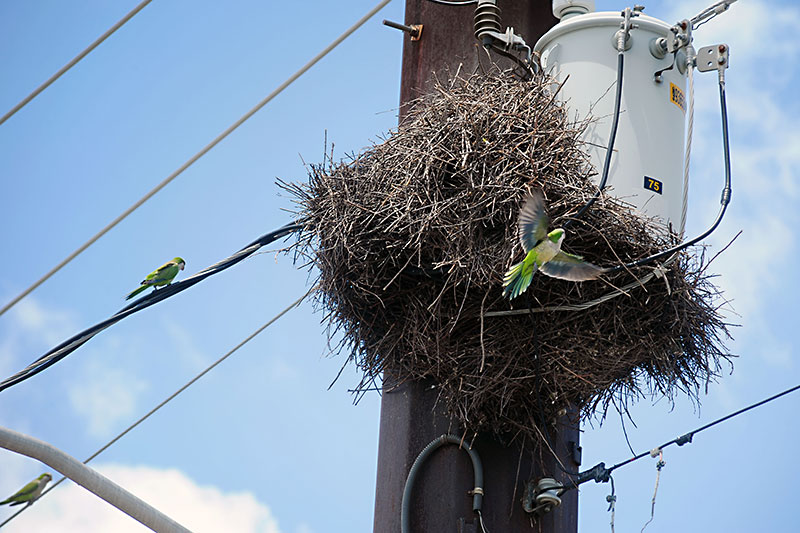
These nests are nothing short of architectural wonders. One nest can be the size of a washing machine and contain multiple chambers, each used by a different parakeet pair. Their design includes insulation layers for weather protection and even “hallways” connecting different chambers. It’s like a high-rise apartment building for birds, crafted entirely from sticks.
But there’s a downside. These nests, while ingenious, are heavy and often located on critical infrastructure. They can damage electrical equipment, short out transformers, and cause expensive outages. Utility companies have been forced to develop unique strategies for dealing with them, from scheduled removals to installing bird-proof barriers.
Video:
Wild Parrots Taking Over Your City | Full Documentary
Why They Succeed in the City
Monk Parakeets possess a few key traits that have made their urban expansion successful. First, they are extremely social and intelligent. Their communication skills and teamwork make them adept at building and defending large shared nests. Second, they are highly adaptable eaters. Seeds, fruits, bread crumbs from city sidewalks these birds aren’t picky. Urban areas offer abundant food sources, both natural and human-provided.
Most importantly, they don’t mind the cold. Unlike many tropical bird species, Monk Parakeets can tolerate lower temperatures, thanks in part to the communal warmth of their nests. This tolerance has allowed them to spread farther north than most would expect, including into parts of the northeastern United States and Central Europe.
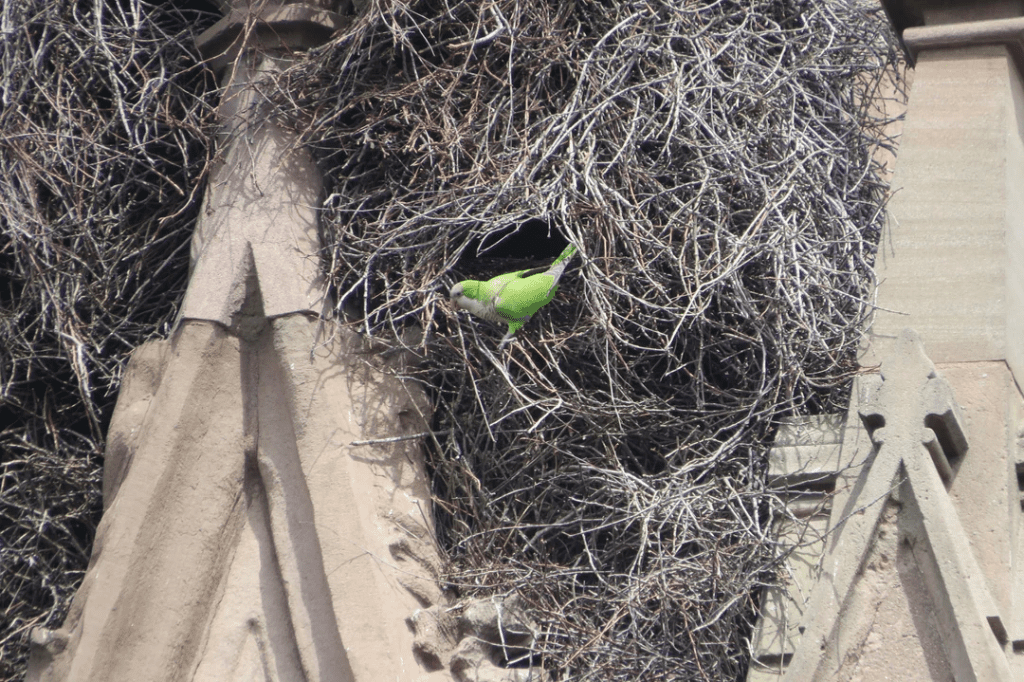
Urban Icons or Invasive Trouble?
The presence of Monk Parakeets sparks mixed reactions. Birdwatchers and city dwellers often enjoy their vivid green feathers, squawking calls, and animated behavior. In places like Chicago and New York, they’ve become part of the city’s character. Some neighborhoods even embrace them as unofficial mascots.
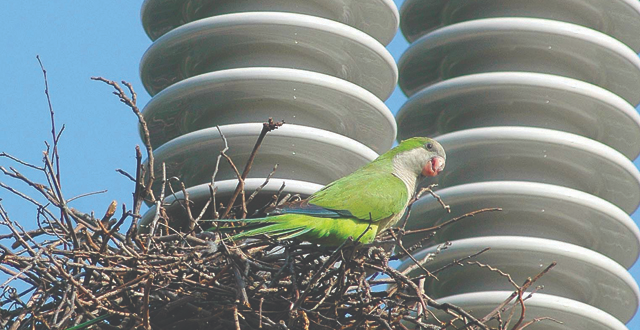
On the other hand, ecologists and utility workers see them as problematic. Their nests can interfere with power lines, causing service disruptions. In some ecosystems, they may also compete with native bird species for food and space.
Because they’re not native to most of the areas they now inhabit, Monk Parakeets fall into the “invasive species” category in many countries. However, their actual ecological damage varies widely depending on the region. While some areas have considered eradication programs, others focus on humane coexistence strategies.
Video:
Monk parakeets build giant nests
The Future of Monk Parakeets in the Urban Wild
As cities grow and green spaces shrink, Monk Parakeets are likely to remain a fixture in many urban environments. Their ability to coexist with human infrastructure, adapt to changing conditions, and reproduce rapidly gives them a long-term advantage. But managing their impact is crucial. Researchers are actively studying their nesting behavior and social dynamics to better understand how to balance preservation with infrastructure protection.
Cities may eventually turn to innovative designs to accommodate or deter these parakeet colonies like fake nesting platforms placed away from power lines or advanced monitoring systems to detect hazardous nests before they cause damage.
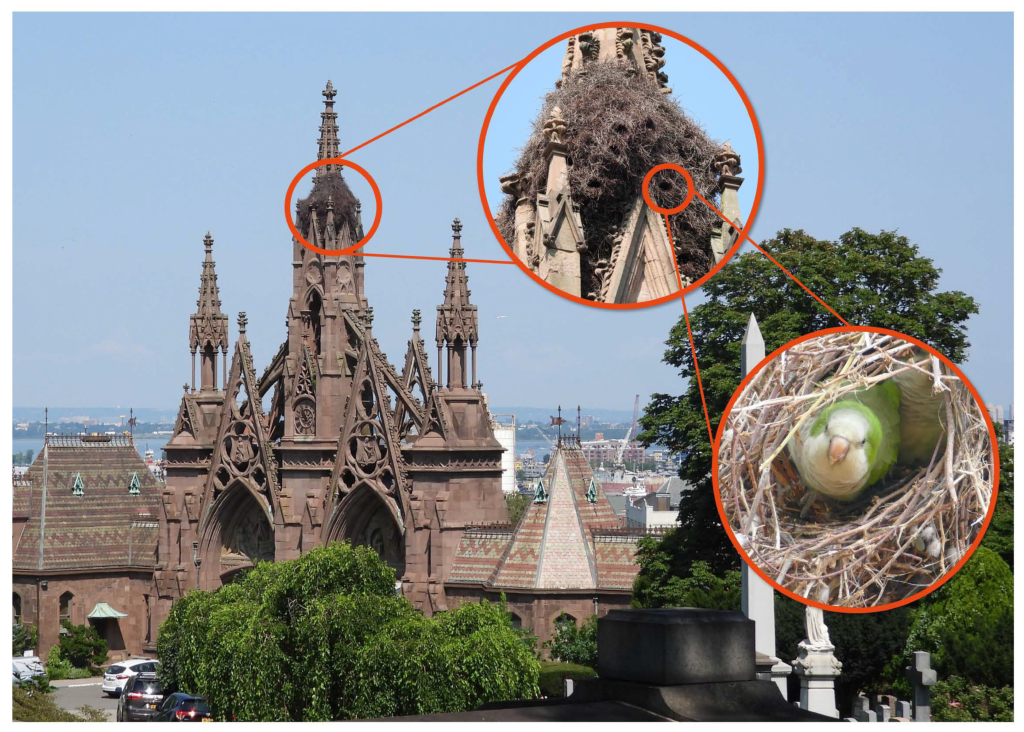
A Bird’s Eye View of Adaptation
The story of the Monk Parakeet is one of unexpected triumph. From humble origins as caged pets in faraway countries, they now rule the skies over some of the most industrialized and urbanized places in the world. Their nests are symbols of both genius and nuisance, depending on whom you ask.
Either way, they’ve earned their place in the history of urban wildlife. These birds don’t just survive they shape the skyline with twigs and teamwork, proving that sometimes, even the smallest creatures can leave a big mark on the modern world.
